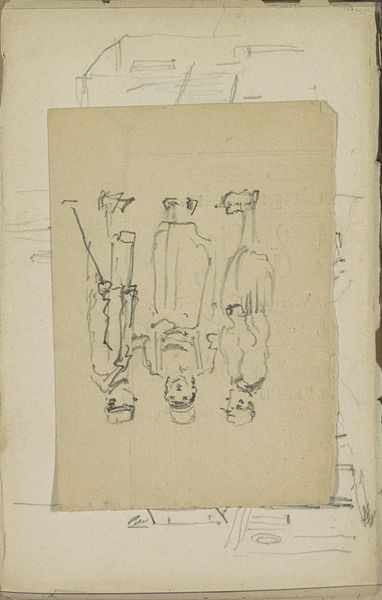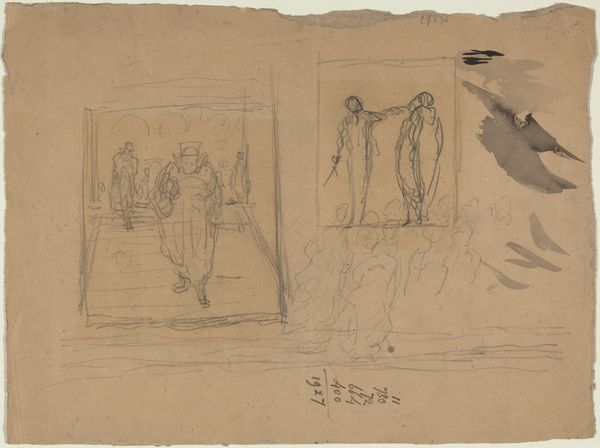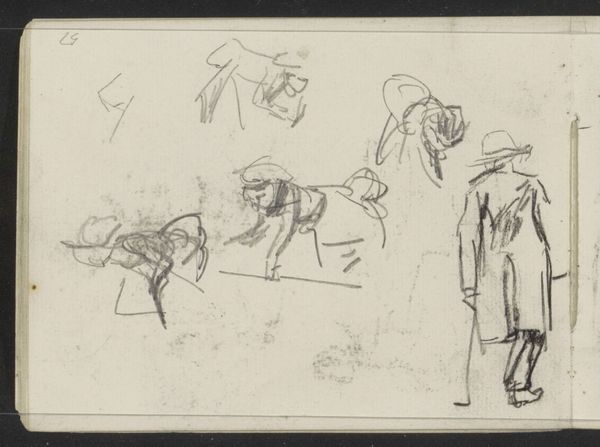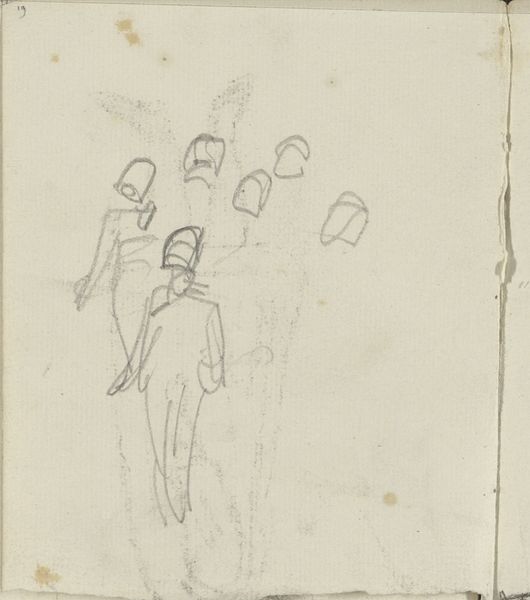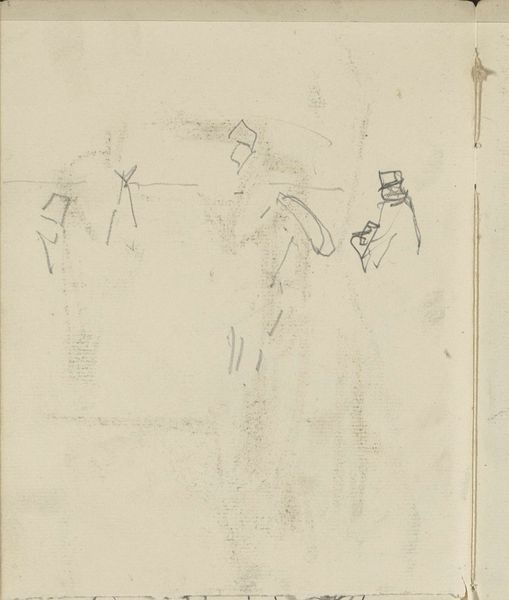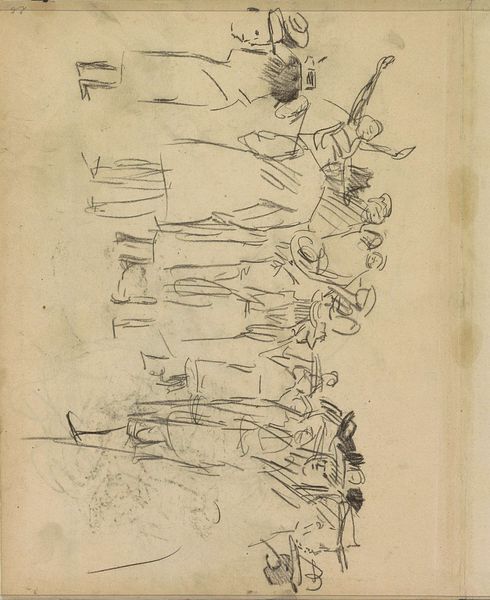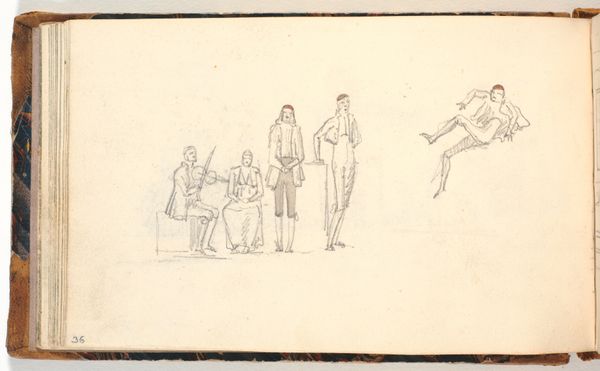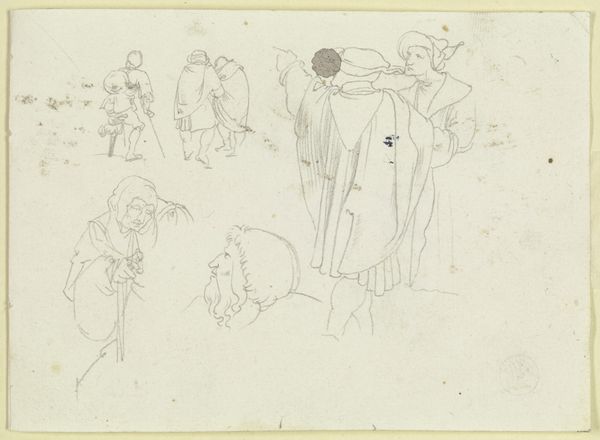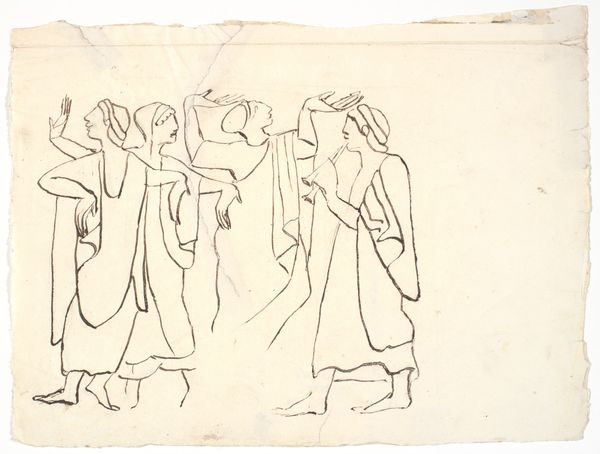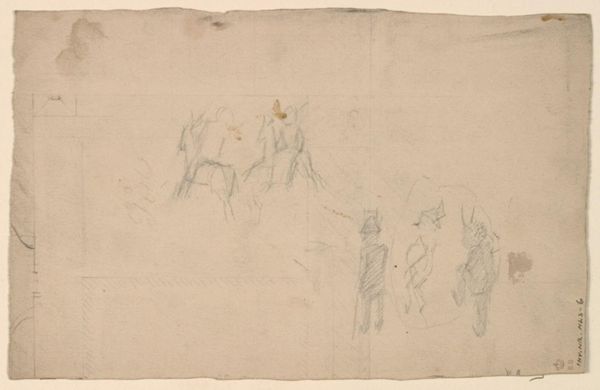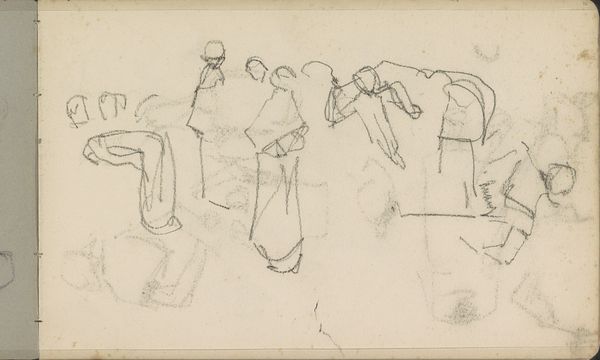
#
amateur sketch
#
light pencil work
#
quirky sketch
#
incomplete sketchy
#
personal sketchbook
#
horse
#
sketchbook drawing
#
quick sketch
#
fashion sketch
#
sketchbook art
#
initial sketch
Dimensions: height 111 mm, width 161 mm
Copyright: Rijks Museum: Open Domain
Curator: Breitner's "Soldiers with their Horses," dating from 1915-1923 and held here at the Rijksmuseum, presents such raw immediacy. What strikes you first about it? Editor: The fragility. It's all light pencil work, clearly a preliminary sketch. Incomplete sketchy outlines; there is the textural contrast between the density of lines defining the horses versus the relative spareness defining the soldiers. Curator: It gives insight into Breitner’s artistic process, though. Think about what war meant for artists—materials became scarce, studios less accessible. Quick sketches on readily available paper become vital. It reflects a reality shaped by resource limitations. Editor: Indeed. The material scarcity definitely impacted artistic expression, driving the development of immediacy. Note also the vertical composition line separating foreground and negative space, its own formal declaration in relation to the depicted figures. What might this division mean? Curator: Perhaps it is about the artist’s labor, sketching while at the margins of war itself, or a personal need to compartmentalize these figures and horses—the tools and the manpower—while grappling with the war effort? Editor: The semiotic density of even this small, rapid drawing seems substantial when we unpack it—the horse's bowed head, the stiff postures. Note too that all we can gather are just a set of rudimentary marks denoting status and potential class: those uniforms and their caps. This visual economy feels potent. Curator: This economy also comes from working on readily available materials and the type of paper and pencils. One can only do as much, and no more. How labor and materials dictate aesthetics! Editor: Fair. While appreciating the historical context and those material factors informing choices—there's also just…skill here. He captures weight, mass, and mood so swiftly and efficiently through such limited means. It's a remarkable example of formal problem solving within constraints. Curator: And these initial sketches offer a view of an artist reckoning with immense shifts in his surroundings. They become invaluable documents shaped by and speaking to social upheaval. Editor: Absolutely. There's always more to unpack, even in a humble drawing. Curator: Thank you for sharing these observations and contributing your keen perspective. It provides a new level of understanding of this remarkable work.
Comments
No comments
Be the first to comment and join the conversation on the ultimate creative platform.
